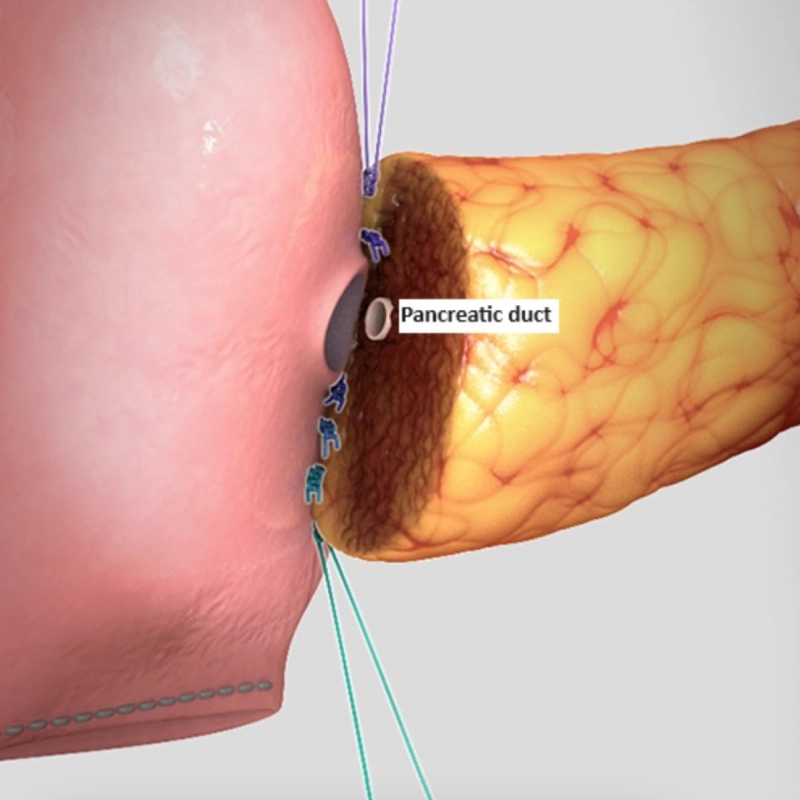
Robotic Whipple's surgery, or robotic pancreaticoduodenectomy, is a groundbreaking advancement in the surgical treatment of pancreatic diseases. This complex procedure, traditionally performed through open surgery, has been revolutionized by robotic systems, offering numerous benefits such as enhanced precision, reduced recovery time, and improved patient outcomes. The robotic platform provides an added advantage of clearing the local cancer spread completely and performing fine connections between the pancreas and the intestines- these advantages will eventually translate to lesser complications and more survival.
Diseases needing Whipple's Surgery
Whipple's surgery is primarily performed to treat conditions affecting the pancreas, bile duct, and duodenum. These conditions include:
- Pancreatic Cancer: The most common reason for Whipple's surgery, especially for tumors located in the head of the pancreas.
- Pancreatic Cysts and Tumors: Including intraductal papillary mucinous neoplasms (IPMNs) and neuroendocrine tumors.
- Chronic Pancreatitis: Severe inflammation causing persistent pain and complications.
- Ampullary Cancer: Cancer at the junction where the bile duct and pancreatic duct meet and empty into the duodenum.
- Bile Duct Cancer: Cholangiocarcinoma affecting the bile ducts.
- Duodenal Cancer: Cancer in the first part of the small intestine.
Symptoms Indicating Whipple's Surgery
Symptoms that might indicate the need for Whipple's surgery include:
- Persistent abdominal pain, particularly in the upper abdomen
- Jaundice (yellowing of the skin and eyes)
- Unexplained weight loss
- Nausea and vomiting
- Loss of appetite
- Fatigue
- Digestive problems
Treatment: Robotic Whipple's Surgery
Robotic Whipple's surgery involves the use of advanced robotic systems to perform the intricate procedure with enhanced precision and control. The key steps include:
- Resection: Removal of the head of the pancreas, the duodenum, a portion of the bile duct, the gallbladder, and sometimes part of the stomach. Along with these structures, lymph nodes will have to be cleared. Lymph nodes are tiny nodules around the tumour and may harbour cancer cells. If these are not cleared, the patient will stand a higher chance of recurrence of cancer. The robotic platform enables good removal of these nodes and hence better survival.
- Reconstruction: Reconnecting the remaining pancreas, bile duct, and stomach to the small intestine to maintain digestive function. The pancreatic duct is only around 3mm wide and the bile duct is around 10mm wide. To connect these structures successfully with the intestine without leakage is a huge challenge. The robotic platform with its 10x zoom and precise instrumentation allows more successful connections.
Benefits of Robotic Whipple's Surgery:
- Minimally Invasive: Smaller incisions lead to less pain, reduced scarring, and quicker recovery.
- Enhanced Precision: Superior 3D visualization and refined instrument control enable meticulous dissection and suturing.
- Reduced Blood Loss: Improved surgical precision minimizes the risk of excessive bleeding.
- Shorter Hospital Stay: Patients often experience faster recovery and shorter hospital stays compared to traditional open surgery.
- Improved Outcomes: Lower complication rates and better overall surgical success due to enhanced accuracy and minimally invasive techniques.
Diagnosis Leading to Surgery
The diagnosis of conditions requiring Whipple's surgery involves several steps:
- Medical History and Physical Examination: Initial assessment of symptoms and risk factors.
- Imaging Studies: Techniques like ultrasound, CT scans, MRI, and endoscopic ultrasound (EUS) provide detailed images of the pancreas and surrounding structures.
- Biopsy: A sample of pancreatic tissue may be taken to determine the nature of a lesion or tumor.
- Blood Tests: Tumor markers, liver function tests, and other blood tests help in diagnosing pancreatic conditions.
Conclusion
Robotic Whipple's surgery is a significant advancement in the treatment of pancreatic diseases, offering a minimally invasive and highly precise alternative to traditional open surgery. With its numerous benefits, including reduced recovery time and improved patient outcomes, it represents a promising option for those requiring pancreatic surgery.

